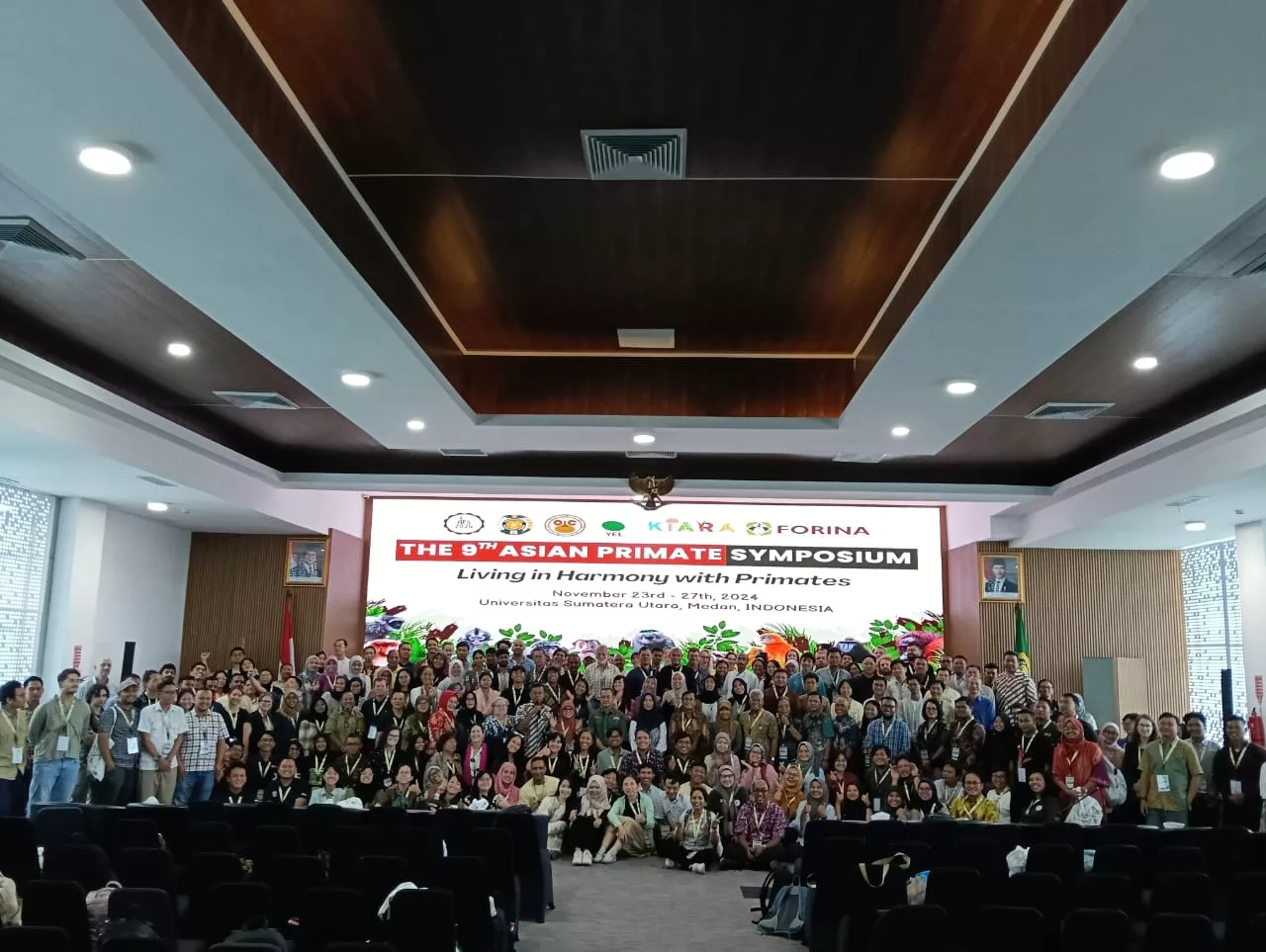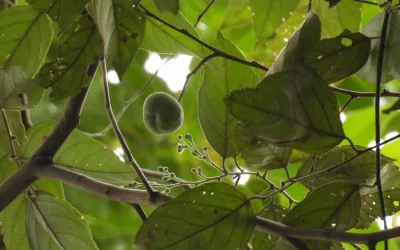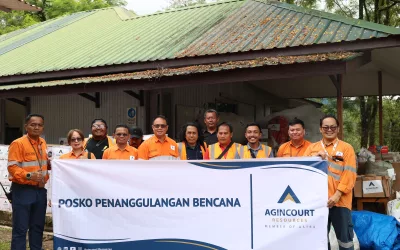Agincourt Resources captured international attention with its presentation at The 9th Asian Primate Symposium (APS), held at the Digital Learning Center, Universitas Sumatera Utara (USU), on November 25, 2024. Represented by Superintendent of Environmental Site Support, Syaiful Anwar, Agincourt Resources highlighted its success in primate conservation efforts through the installation of arboreal bridges in the Martabe Gold Mine area.
The installation of arboreal bridges is one of Agincourt Resources’ innovative measures to facilitate primate movement across fragmented habitats caused by mining activities. “A total of 13 arboreal bridges have been installed at various points in the Martabe Gold Mine,” Syaiful stated.
Monitoring results using camera traps showed that at least six primate species, namely: Huliap/Cek Cek (Presbytis sumatrana), Beruk (Macaca nemestrina), Long-tailed Monkey (Macaca fascicularis), Gray Langur (Trachypithecus cristatus), Root Civet (Arctogalidia trivirgata), and Black Jelarang (Ratufa bicolor) have used this bridge. This evidence demonstrates that arboreal bridges are e_ective in mitigating the impacts of habitat fragmentation and supporting primate survival.
Agincourt Resources has conducted in-depth research into the behavior of Huliap/Cek Cek (Presbytis sumatrana) in the Martabe Gold Mine area. This study aimed to understand the vertical and horizontal space utilization by this endemic Sumatran species and their behavior within the existing ecosystem.
The results showed that Huliap/Cek Cek used the forest canopy more frequently at 11-15 meters in the New Magazine area, while in the Barani area, they were more frequent at 5-10 meters. In addition, Huliap/Cek Cek had an average daily home range of about 0.56 km in New Magazine and 0.30 km in Barani. The total home range during the study in New Magazine was 17.7 hectares, while in Barani it was 14.9 hectares.
The study also identi_ed the daily activities of Huliap/Cek Cek, which were dominated by resting, moving and feeding. In addition, plant species that are the main food source for this Sumatran langur were also identifed. In the New Magazine area, Huliap/Cek Cek consumed food from 20 flora species, while in the Barani area, they consumed food from 21 flora species.
Read Also: Protect and Conserve Primates by Developing Local Tree Seeds and Seedlings
The success of Agincourt Resources primate conservation initiatives is the result of collaborations with various parties, including primate experts from Universitas Nasional and Universiti Sains Malaysia. These partnerships have generated valuable scientific data to support primate conservation efforts in Sumatra.
“Through these conservation initiatives, Agincourt Resources is committed to maintaining a balance between mining operations and biodiversity preservation. We hope the findings from our research can serve as a reference for primate conservation efforts in other regions,” Syaiful added.
The symposium gathered researchers, conservationists, and policymakers from various Asian countries to discuss contemporary issues in primate conservation, particularly orangutans. Under the theme “Living in Harmony with Primates,” the event aimed to foster collaboration and seek practical solutions for primate and habitat conservation.
If you are interested in learning more about the gold mining and processing conducted by PT. Agincourt Resource, you can click here







